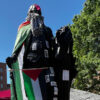When heads of state gather, as they did for the United Nations General Assembly last week, you have a choice: Tune out, or prepare to be bathed in blather, boilerplate, and blatant lies. That said, the remarks of Argentine President Cristina Fernandez de Kirchner deserve at least a few minutes of our undivided attention.
Her biggest whooper: “[I]n Argentina, my government, our government will tirelessly continue seeking the truth and justice in the AMIA case.”
The AMIA case, you may recall, was the most lethal act of terrorism in the Americas prior to Sept. 11, 2001. On July 18, 1994, a Jewish community center in Buenos Aires (the Asociación Mutual Israelita Argentina) was suicide-bombed, killing 85 people and wounding more than 300.
The evidence, of which there is no shortage, leads to one conclusion: Iran’s rulers ordered the mass murder; Iran’s proxy terrorist organization, Hezbollah, carried out the mass murder; and in recent years, Argentine officials at the highest levels have been involved in a cover-up of the mass murder.
Coincidently, influential Washington types last week filled the Newseum’s Annenberg Theater for the premier of “Los Abandonados” (“The Abandoned”), a compelling film directed by Matthew Taylor that tells the story of the bombing, and of Alberto Nisman, the intrepid federal prosecutor who spent a decade investigating the case. Nisman was shot and killed on Jan. 18—the day before he was scheduled to present a 300-page report and testify before Argentina’s congress. He had become convinced that Kirchner was herself implicated in the cover-up.
Initially, Kirchner alleged that Nisman had committed suicide. Later, she and her allies said he had indeed been murdered, but perhaps by a jealous lover or a rogue Argentine intelligence operative whose motive was to discredit her. In her address at the U.N. last week, Kirchner said only that “prosecutor Nisman” had “passed away.”
To prevent the truth from passing away, Taylor went to Argentina, where he quietly—he didn’t inform authorities—interviewed journalists, opposition politicians, and anyone else brave enough to tell him what they know. As the film shows, Argentines have gathered by the hundreds of thousands to protest what they see as their government’s capitulation to terrorists. Some have carried signs reading: “Islamic Fundamentalists Killed Nisman.”
In a conversation immediately following last week’s screening, Taylor was asked if he had made the movie to influence opinion about President Obama’s nuclear weapons agreement with Iran. When he began the project, he replied, he was not even aware of that controversy. But the film does serve, he added, as “a guide to what happens when you do deals with Iran.”
He pointed out that the AMIA bombing and the murder of Nisman started “with a nuclear deal”—an agreement Argentina made in the late 1980s to provide Iran with nuclear technology and assistance. Eventually, under pressure from the United States, the Argentine government did not give Iran’s revolutionary theocrats what they wanted.
One plausible theory—in essence, Nisman’s theory—is that the attack was Iran’s way of sending a message and a warning: “This time we kill Argentine Jews. Disappoint us again and who knows what our targets will be?”
If Taylor is a neoconservative, a national security wonk, or a geopolitical strategist, he doesn’t look the part. At the premier, he wore a long, striped Nehru jacket and turquoise glasses. He sees himself as a good filmmaker doing what good filmmakers do: tell the truth and tell stories—making both understandable and even entertaining.
Nisman was appointed to his position in 2004 by President Nestor Kirchner, who seemed determined to bring to justice those responsible for the 1994 bombing—as well as the 1992 bombing of Israel’s embassy, in which 29 people were murdered.
When Kirchner succeeded him in 2007, she continued to support Nisman, who in 2006 had indicted seven Iranians and one Lebanese-born member of Hezbollah. She denounced the Iranian regime. At the U.N. General Assembly in 2011, she demanded that Iran “submit to the legal authority” and cooperate in the prosecution of those responsible for “the AMIA attack.”
But over time, as The New Yorker’s Dexter Filkins has pointed out, she “made an extraordinary about-face.” And in 2013, she sought to set up an Iranian-Argentine “truth commission” to investigate who was “really” behind the bombing—as if Iran’s rulers didn’t know and sincerely wanted to find out.
To be charitable, the line between making compromises and becoming compromised is all too easily crossed even by those with the best of intentions. And it’s at least possible Kirchner came to believe that refusing to shield Iran was simply too dangerous.
Perhaps she rationalized, too, that this was the best deal she could get and that even a bad deal was preferable to no deal—much as President Obama came to view the agreement he cut giving Iran’s rulers a long list of concessions in exchange for their vague promise to delay a nuclear weapons program whose existence they refuse to acknowledge.
Whatever the reasons, Kirchner’s Faustian bargain necessitated abandoning both the AMIA victims and Nisman. Did it necessitate something even worse? That remains an unsolved murder mystery.
The Islamic fundamentalists who rule Iran are as determined and ruthless as any in the world. Their agents, including Hezbollah, are increasingly influential throughout much of Latin America. And they are about to be enriched, legitimized, and further empowered by an American president and other world leaders who gathered last week at the United Nations to stand on the podium and prattle on about almost anything else.
Originally published in The Washington Times.



























